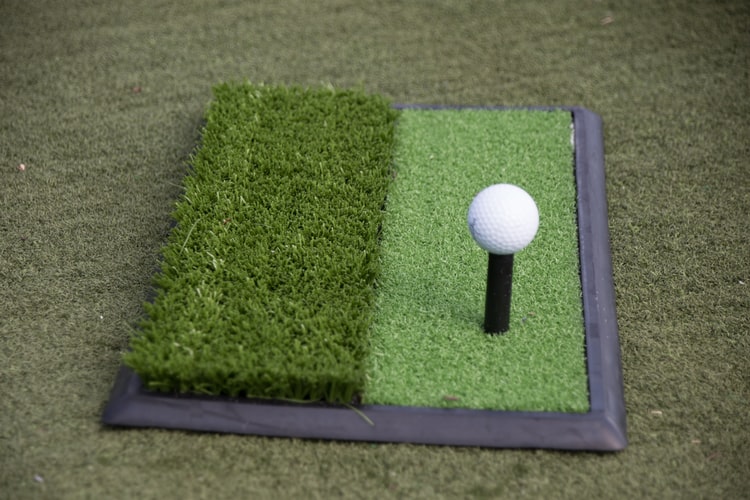Synthetic Grass as a Trend for Your Yard
Use synthetic grass as an alternative for your grass.
Author:James PierceReviewer:Paolo ReynaJan 22, 20213.9K Shares199.7K Views

As Australia's extreme drought has turned many green, lush gardens and yards into brown, lifeless dust bowls, a growing number of Australian homeowners turn synthetic turf into a viable solution. Similarly, more homebuilders, landscapers and sporting and commercial facilities are aggressively researching and encouraging synthetic surfaces, creating a drastic increase in the market for synthetic turf.
There are many benefits to installing synthetic grass versus natural grass, here are just a few:
Synthetic Grass Versus Natural Grass
Watering
With Stage 3, Stage 4 and Stage 5 growing water restrictions in place across much of the world, water conservation is now at a critical point, and many homeowners find that they are simply not allowed to water their lawns. While rainwater tanks will definitely ease the problem in the short term, they will only function if there is enough rainfall to fill them.
Gray water systems can also fix some of the issues, but the truth is that contaminants and soaps in gray water obtained from some of these systems can potentially damage the lawn if not properly treated. Finally, for commercial uses, including soccer ovals, golf courses, retirement homes, land development and sports facilities, the cost and effort of moving water through a pipe system or a truck may be prohibitive (and, as the news has shown, citizens of the city could be angered by using this important resource for non-vital purposes).
Synthetic grass, on the other hand, does not need irrigation, thereby allowing Australians to save water. Synthetic lawns remain green, lush and soft regardless of climate change, temperature or other environmental factors, making them a logical and viable option for both home and business applications.
Maintenance
The warm and dry climates peculiar to Australia make natural grass very difficult (and costly) to maintain. Homeowners, councils and land maintenance firms expend huge sums of money on water, fertilizers, pesticides, cleaners, mowing and general labor to maintain their natural grass in good shape.
Synthetic grass, however, does not require any of these expensive products. Maintaining a synthetic lawn is as simple as raking leaves when appropriate, and sometimes sanding or rubber. In addition, many synthetic turf manufacturers may use special UV coating to shield the lawn from the harsh ultraviolet rays of the sun, ensuring the synthetic grass does not fade or fade with age.
Environment
As described above, the maintenance of natural grass lawns involves daily use of fertilizers, chemicals and pesticides. Apart from the inherent danger of exposure to infants, pets and native animals in the vicinity, these items inevitably migrate to soil, groundwater, and ultimately to lakes, streams or even oceans.
This can have major long-term effects on the planet's plants, the animals, the air we breathe and the food we consume. Synthetic Grass, on the other hand, does not require any chemicals or pesticides to be maintained and offers a clean, healthy environment for families and the public.
Safety
Grass, on the other hand, does not require any chemicals or pesticides to be preserved and offers a clean, healthy atmosphere for families and the public. Protection Natural grass lawns and sports fields are not absolutely flat. With daily use, grass lawns grow dips, mounds, bumps, holes, and other anomalies that can cause tripping, twisted ankles, or other significant injuries.
A properly constructed synthetic lawn, however, is most typically built on a smooth, level ground (usually excavated and gridded) that includes one or two layers of compacted, crushed base and a layer of foam padding. The lawn is then in-filled with a mixture of either rolled sand or crushed rubber, and then raked or swept to maintain a smooth, flat surface. When done properly, synthetic grass or sports field is much better than natural grass, which is why more large sports organizations and schools in the U.S. and Australia are replacing their soda and natural grass with synthetic grass.
Appearance
Technology has dramatically developed synthetic turf over the last decade. The days of neon-green Astroturf or knee-burning plastic-fiber carpets are gone.
Nowadays, synthetic turf comes in various fiber lengths, colors and weaves, and is manufactured to mimic the look and feel of natural rye, bermuda, bluegrass, centipede or virtually any kind of natural grass available. The latest generation of synthetic turf also feels extremely comfortable to the touch, a welcome addition for children and pets.
Cost
It is widely assumed that natural grass is much cheaper than synthetic grass-as grass seeds or grass transplants are relatively inexpensive. So, from $50 to $100 per square meter (installed), bulky upfront investment in the purchase and installation of synthetic turf may seem costly. In fact, however, the long-term cost is actually lower than that of natural grass.
When factoring in the 5-to 10-year cost of grass seed, water, fertilizers, lawn feed and pesticides, as well as labor and time to mow, trim, aerate, fill, mulch and keep a natural grass lawn, it becomes clear that a synthetic lawn will pay for itself within a few years, depending on the size of the area and the cost.
However, the most common advantage for the average homeowner to own a synthetic lawn is "Time" Less time to keep a lawn means more time to enjoy it. More time for the children's backyard cricket. More time for footy backyard. Or just "more time in the backyard"

James Pierce
Author

Paolo Reyna
Reviewer
Latest Articles
Popular Articles